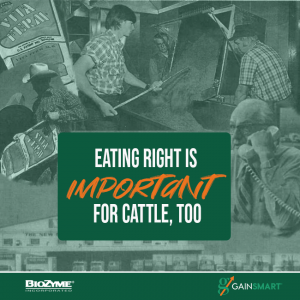
For cattle producers looking for a little good news in the future, look no further than the first part of 2022. Although challenges will exist – drought, cost of gain, labor shortages – enough changes are happening to help, especially those in the stocker sector.
Derrell Peel, Endowed Professor of Agricultural Economics at Oklahoma State University, recently offered his perspective on the big picture of the beef industry as a whole before addressing more specific topics on the stocker and feedlot side. Cow herd size is shrinking after a cyclical expansion that peaked in 2019, with the height of the calf crop coming in 2018. The combination of timelines in the beef cattle industry with all that has happened the last 18 months with COVID and the pandemic, feedlot numbers didn’t really peak until early in 2021. However, now due to lower supplies and heightened demands, all segments of the beef cattle industry should experience higher prices moving into 2022.
“The supply side is supporting the market and will continue to support the market in 2022. Part of the optimism is coming from the supply fundamentals,” Peel said. “Beef demand has been very good across wholesale, grocery stores, retail, even with disruptions. Exports will set new records in 2021. Even with two months left to report this year, we are well on the way to beat the old record that was set in 2018.”
The Stocker Segment
What does all of this mean for those who run stockers and background calves? According to Peel, they are going to have ample opportunities to feed calves and realize added profit potential. With grain, especially corn, prices higher at least through harvest in 2022, the feedlots are experiencing higher costs of gain, and looking to buy calves at heavier weights than normal, meaning fewer days on feed.
“That affects price relationships across feeder cattle. If feedlots want bigger cattle, someone has to put that weight on them before they go to the feedlot, and that is the stocker sector. So, with high feed prices and high feedlot cost of gain, that increases incentives for stocker production in general, and we have certainly seen that,” Peel said. “The value of gain on 500-600 pound to 800-pound calves is elevated. Generally, stocker producers are looking at some good opportunities, and the futures market has optimism built into it.”
Although Peel said many feed yards might want to buy stocker calves at heavier weights to keep their cost of gains to a minimum, he iterated that feed yards also run feed mills, so they also need to keep a steady supply of calves on hand. Therefore, he projects there will be a divide in the number of feeders who do buy at heavier weights and those who buy at more traditional weights.
However, for those who do buy at heavier weights, the stocker segment offers great versatility in how they put gain on those calves. With a delayed wheat planting and then continued drought in the southern plains, Peel said that calves that are traditionally grazed on wheat pasture through the early part of the year will likely need to find alternative feed sources. Producers may opt to sell them to others who have pastures or dry lots, keep them and feed them their own grain or forages or sell them to a feedlot that isn’t bothered by buying some lighter weight calves to finish.
Healthy, Efficient Pounds
Due to the drought through much of the country, hay prices are also higher than normal, and much of the usual pasture is not as readily available for grazing. With the high value of gain for those in the stocker segment, they should want to get the most nutritional value from their available feedstuffs regardless of if that is wheat, pasture or grain.
Progressive stocker operators feed the Gain Smart® line of vitamin and mineral supplements for beef cattle with the Amaferm® advantage that promotes economically produced pounds by maximizing the natural energy and protein available. Amaferm is a precision prebiotic designed to enhance digestibility by amplifying nutrient supply for maximum performance. It is research-proven to promote calf health and vigor, stimulate digestion and increase nutrient absorption for optimum gain.
“This is our third grazing season using the Gain Smart® Wheat mineral. It seems to me our gains are probably up between a quarter to a third pound a day compared to the past, since switching to the Gain Smart. We’ve run the same style of high-risk cattle the past 10 years. Our health seems to be substantially better. It seems like our sickness and death loss has been significantly less the last three years. The Gain Smart increases digestibility. If they are eating, they stay healthier,” said Gregg Pickens, Oklahoma stocker operator.
Four Gain Smart formulas exist geared toward individual management scenarios. Gain Smart Stocker is for calves on grass, Gain Smart Wheat is for those calves grazing wheat pasture or other small grain pastures, Gain Smart Balancer RU-1600 contains rumensin and is designed to balance those calves on high-grain diets, and Gain Smart Stocker HEAT is for cattle grazing fescue or any time temperatures get hotter than 70 degrees.
With an optimistic outlook for 2022, that should make the industry breathe a sigh of relief. No, it isn’t perfect. Drought has forced cow herd sizes to be reduced, packers are short on labor, and the weather will still be unpredictable. However, the stocker sector, can look forward to putting some added value to their calves, getting more efficient gains and turning a profit.

